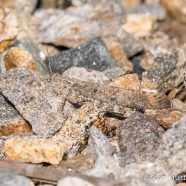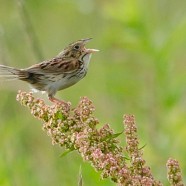Carolina Grasshopper
Wow, look at that camouflage! I believe this is a Carolina Grasshopper (Dissosteira carolina) and I am amazed at how well it works on those rocks… Scott Kruitbosch Conservation & Outreach Coordinator
Read MoreAmerican Kestrel
The month of October is always a great time to find plenty of American Kestrels passing through, with this male sporting some shades of Halloween. They are often rather shy but sometimes, if you let them fly to you after chasing some prey, you will be able to get a decent look even if only for a minute. These predators will go after birds but can usually be found foraging on abundant insects like grasshoppers or even the praying mantis here in the fall.
Read MoreSpring projects accelerating
We are about to hit the busiest time of our year as spring and summer field work and active conservation projects go into full swing on the ground in Western New York and nearby areas of Pennsylvania. We are working seven days a week nonstop during these seasons to collect data, conduct research, educate the public and train the next generation of scientists. Here are only some of the major initiatives that are underway at the moment: In 2001 RTPI published a Natural History Atlas to the Chautauqua-Allegheny Region, culminating several years of environmental education work through a matching...
Read MoreRare Henslow’s Sparrows Recently Discovered at Chautauqua County Airport
Area birdwatchers recently made a discovery that has regional conservationists very excited: a small population of the endangered Henslow’s Sparrow exists at the Chautauqua County Airport near Jamestown. These small, elusive birds inhabit grasslands and prairies and, like many other grassland birds, their numbers have declined precipitously in the eastern U.S. over the past 100 years. This is happening for a variety of reasons but the transitioning of old farm fields into forest over time and the increased production of row crops and intense harvesting of hay in areas where grassland...
Read More






